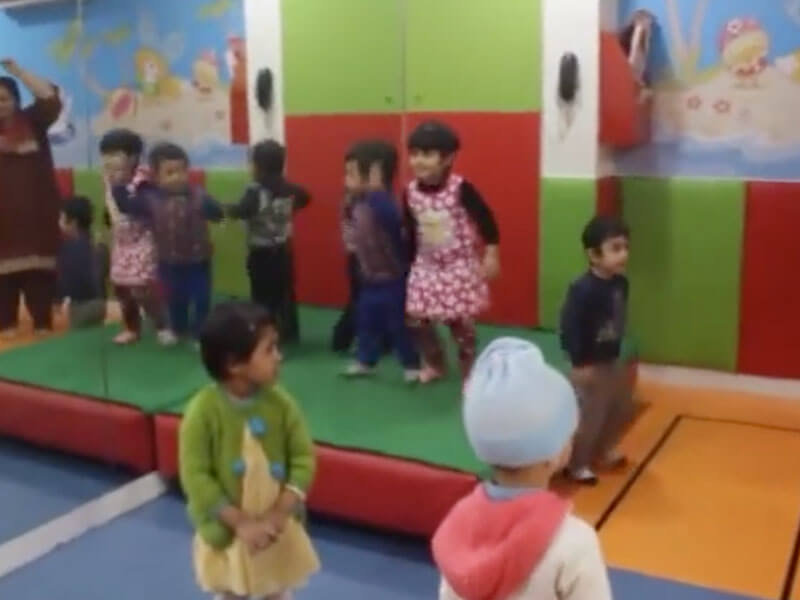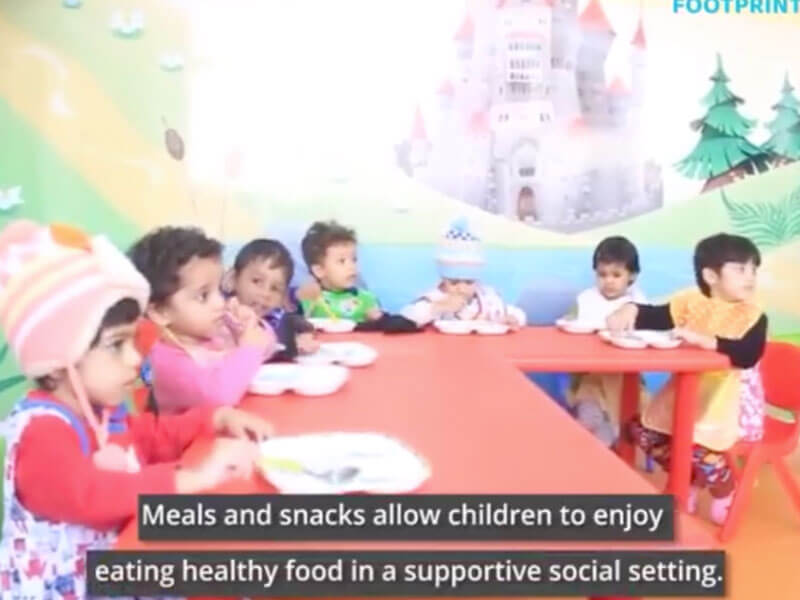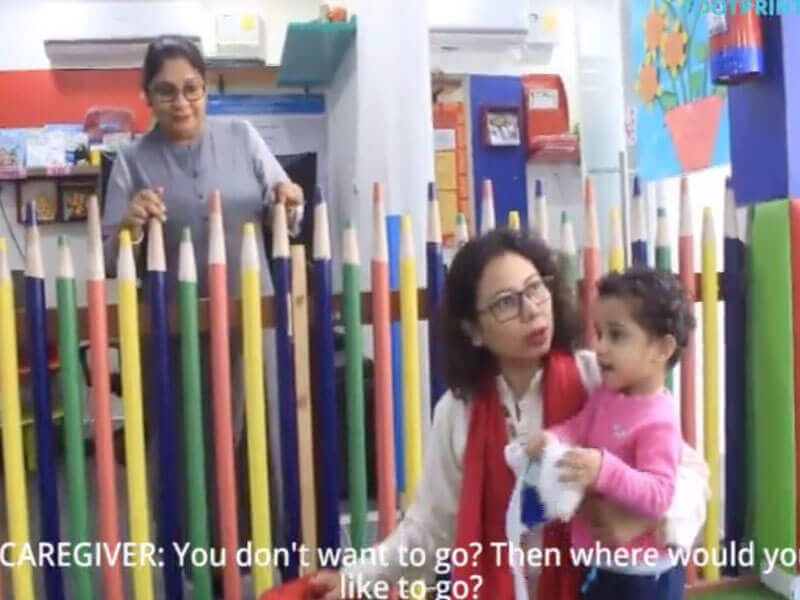Our Presence
Pre School
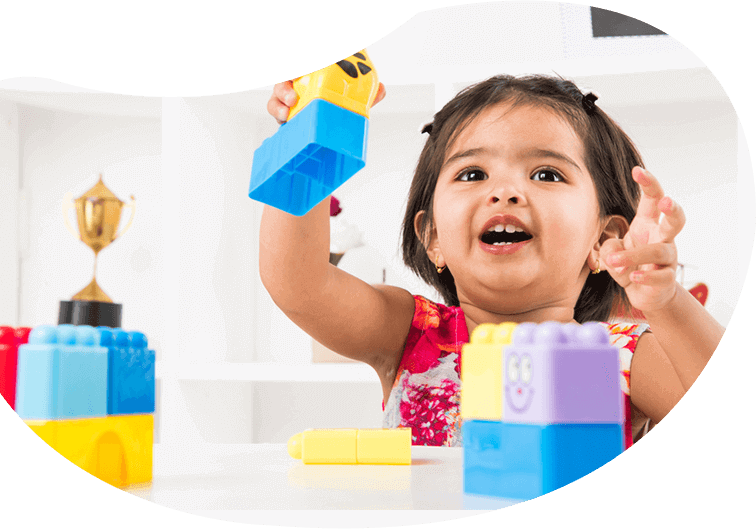
Footprints Pre School program offers opportunities for children to explore and learn through a carefully designed methodology of the HighScope Curriculum called “active participatory learning”. This enables our young learners to achieve overall growth and development. Our preschool programs are engineered to help the children to explore and celebrate their learning abilities. Our trained staff support children to develop necessary skills in a safe, healthy and nurturing environment to seamlessly learn and grow.
Timing : 8:15 AM* to 12:30 PM (Day care also available)
Toddler
12 - 24 Months
1:5 Adult Child Ratio
Playgroup
24 - 36 Months
1:8 Adult Child Ratio
Pre-nursery
36 - 48 Months
1:10 Adult Child Ratio
LKG
48 - 60 Months
1:10 Adult Child Ratio
UKG
60 - 72 Months
1:10 Adult Child Ratio
*Our regular timings are from 9:00 AM to 6:30 PM. Early/Late hours are served depending upon availability at specific branches and charged extra. Saturday services are also available at select branches.
Best Preschool In India for Early Education, Admissions Open
Awarded as "Innovation for Curriculum" for Preschool and "Leading Preschool in India" by BW education, founded by IIT-IIM alumni's, We are passionate to nurture champions for life. Our leaders are highly-qualified and experienced in early education sector. Footprints Preschool follows HighScope Curriculum, It's based on active learning in which children used to learn and grow through play and fun activities.
HighScope classrooms follow a predictable sequence of events known as the daily routine. This provides a structure within which children can make choices, follow their interests, and develop their abilities in each content area.
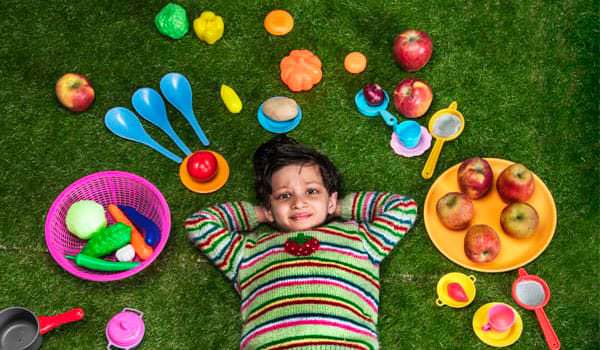
CHOICE TIME
- Alternatives given as choices to children always helps in honing their decision-making ability.
- At this time of the day children are given both, the choice and the apt material to choose from and play with.
- Children focus on what they can create and how they can use their skills to convert a simple teaching aid or a toy into a new creation in our pre school programs.
- Here we can note children creating empty carton boxes into farms and old clothes into robes.
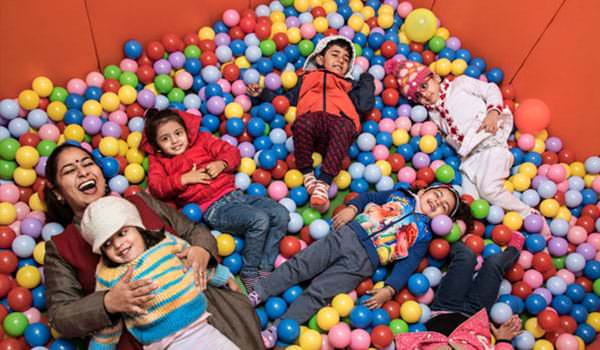
SMALL-GROUP TIME
- In our early learning pre-school program, to identify one’s power and challenges, a small group is a prerequisite for being child-centric.
- Children here gather in small group and connect with the teachers while they are being closely observed and scaffolded to do the activities.
- This time of the day provides the child a secure space to communicate and express what they hesitate due to inhibitions in a larger setting.
- The play school educational activities here are diversified from tracing letters, playing number games to solving puzzles etc.
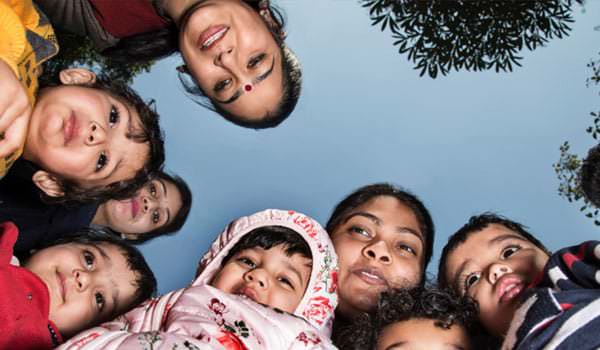
LARGE-GROUP TIMES
- Children grasp the principles of engaging in a bunch and establishing communities best in a large group setting.
- Here, children gather in a large group with their fellows and teachers to engage in various activities.
- From taking turns, to taking lead and following with the team, here children build upon their social skills.
- The pre-school extra-curricular activities here range from music, group recitals, dance to story narrations, puppet shows and much more.
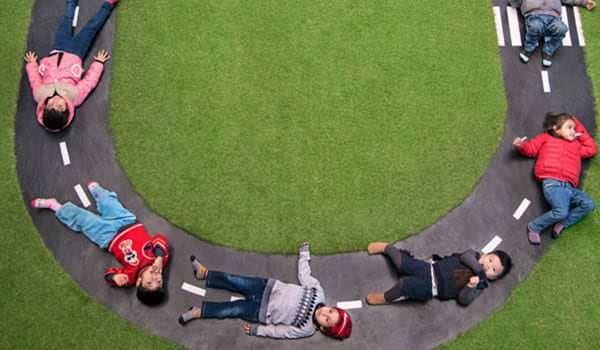
OUTSIDE TIME
- Children assimilate best when prone to environment and physically expand beyond the walls of the classroom.
- As for the weather, children along with the teachers spend around half an hour each day in the outdoor area.
- Children get to observe nature and also the principal lessons of life are learnt here like climate, sun, clouds etc.
- Pre-school children are seen engaged in different physical activities along with honing their senses.
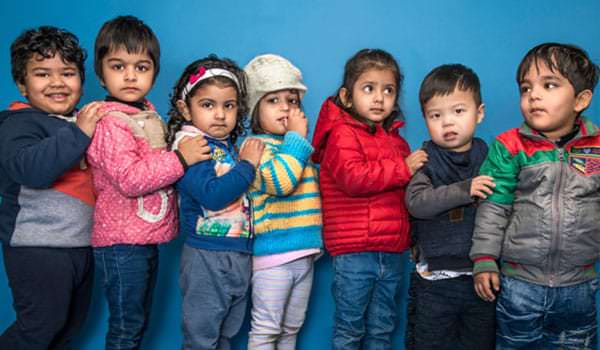
TRANSITION TIMES
- This time of the day helps in creating a scheduled practice for the children. With a consistent everyday routine child knows what next is going to take place.
- In pre-school daily schedule transitions are the gaps between other blocks of the day, like arrival to choose time or outdoor to small group time.
- Whenever feasible, children are given options on how to make the transformation. For example, they may choose how to move across the floor on their way to small-group time.
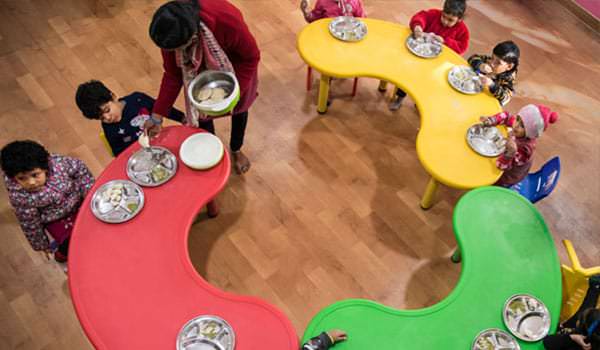
EATING AND RESTING TIMES
- Meals and snacks enables children to consume healthy food in a supportive social setting.
- Rest is for quiet, solitary activities.
- Children can be observed reading, engaging in self play during this time if they choose to not sleep.

CHOICE TIME
- Alternatives given as choices to children always helps in honing their decision-making ability.
- At this time of the day children are given both, the choice and the apt material to choose from and play with.
- Children focus on what they can create and how they can use their skills to convert a simple teaching aid or a toy into a new creation in our pre school programs.
- Here we can note children creating empty carton boxes into farms and old clothes into robes.

SMALL-GROUP TIME
- In our early learning pre-school program, to identify one’s power and challenges, a small group is a prerequisite for being child-centric.
- Children here gather in small group and connect with the teachers while they are being closely observed and scaffolded to do the activities.
- This time of the day provides the child a secure space to communicate and express what they hesitate due to inhibitions in a larger setting.
- The play school educational activities here are diversified from tracing letters, playing number games to solving puzzles etc.

LARGE-GROUP TIMES
- Children grasp the principles of engaging in a bunch and establishing communities best in a large group setting.
- Here, children gather in a large group with their fellows and teachers to engage in various activities.
- From taking turns, to taking lead and following with the team, here children build upon their social skills.
- The pre-school extra-curricular activities here range from music, group recitals, dance to story narrations, puppet shows and much more.

OUTSIDE TIME
- Children assimilate best when prone to environment and physically expand beyond the walls of the classroom.
- As for the weather, children along with the teachers spend around half an hour each day in the outdoor area.
- Children get to observe nature and also the principal lessons of life are learnt here like climate, sun, clouds etc.
- Pre-school children are seen engaged in different physical activities along with honing their senses.

TRANSITION TIMES
- This time of the day helps in creating a scheduled practice for the children. With a consistent everyday routine child knows what next is going to take place.
- In pre-school daily schedule transitions are the gaps between other blocks of the day, like arrival to choose time or outdoor to small group time.
- Whenever feasible, children are given options on how to make the transformation. For example, they may choose how to move across the floor on their way to small-group time.

EATING AND RESTING TIMES
- Meals and snacks enables children to consume healthy food in a supportive social setting.
- Rest is for quiet, solitary activities.
- Children can be observed reading, engaging in self play during this time if they choose to not sleep.
![award icon]() Awards
Awards
FAQs
Our preschool welcomes children aged 12 Months to 96 Months.
We are open from Monday to Friday, from 8:15 AM to 7:15 PM. Regular timings are from 9:00 AM to 6:30 PM. Early/Late hours are available at specific branches and charged extra. Saturday services are also available at select branches.
Yes, we follow a US based Highscope Curriculum that encourages social, emotional, and cognitive development through interactive and creative activities.
We maintain a 1:10 teacher-to-student ratio, ensuring personalized attention and a nurturing learning environment.
We offer healthy snacks and meals as part of our program. You can find our menu in our handbook, and we accommodate dietary restrictions as needed.
Find Your Preferred City
- Preschools and Daycare in Agra
- Preschools and Daycare in Ahmedabad
- Preschools and Daycare in Bengaluru
- Preschools and Daycare in Chennai
- Preschools and Daycare in Faridabad
- Preschools and Daycare in Ghaziabad
- Preschools and Daycare in Greater Noida
- Preschools and Daycare in Gurgaon
- Preschools and Daycare in Hyderabad
- Preschools and Daycare in Indore
- Preschools and Daycare in Jaipur
- Preschools and Daycare in Kanpur
- Preschools and Daycare in Kochi
- Preschools and Daycare in Kolkata
- Preschools and Daycare in Lucknow
- Preschools and Daycare in Mohali
- Preschools and Daycare in Mumbai
- Preschools and Daycare in New Delhi
- Preschools and Daycare in Noida
- Preschools and Daycare in Patna
- Preschools and Daycare in Pune
- Preschools and Daycare in Raipur
- Preschools and Daycare in Srinagar
- Preschools and Daycare in Thane
- Preschools and Daycare in Udaipur
- Preschools and Daycare in Vadodara
- Preschools and Daycare in Visakhapatnam




